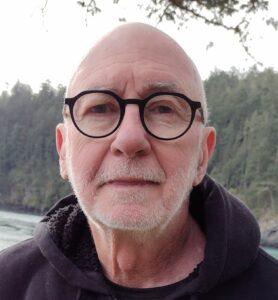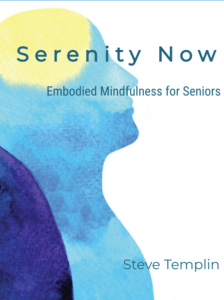In part one of this post, we explored the indispensable role that feelings play in your healing and wholeness. We looked at feelings as a right brain expression of your body’s wisdom. When we connect with feelings we activate the body’s ability to repair and heal itself.
We also examined how a lack of feeling connection disrupts these innate healing mechanisms and ultimately undermines one’s health and happiness.
In this post, we’ll discuss how to reconnect with this inner wisdom. We’ll also look at some of the supportive science.
I don’t know about you, but the science helps me personally. It helps me know that self-healing is real science and not some form of naive wishful thinking.
The science also helps me to counter my early brainwashing. I grew up watching tv shows where the smartest, kindest, and best-looking doctors had all the answers – every week. What the shows didn’t promise to heal, the drug commercials now do.
The Science Overview
Epigenetics comes to mind first. Epigenetics shows that your genes don’t automatically control your health. This science says that there’s something ‘epi – or above’ the gene that’s in charge of gene expression. And that something above is perception. Yes, your mind ultimately has a profound influence on the expression of your genes and your health.
For example, when you practice the heart breathing exercise that I teach to all patients you experience safety. We can verify this state in real time with the HeartMath software in terms of increased heart rate variability.
Once safe you begin to trigger the expression of genes that are responsible for the manufacture of DHEA. This is the health-promoting, anti-aging hormone produced in the adrenal glands when you’re not under threat. At the same time that more DHEA is being produced the body will balance its production of the stress hormone cortisol.
For many women, the increase in DHEA and the lowering of cortisol will allow them to produce more progesterone. This is a natural, drug-free way to address the growing problem of estrogen dominance.
More supportive research comes from the new field of Positive Psychology. It’s demonstrating that how we use our mind changes our brain. We can learn to change how our brain functions as well as to enhance brain growth and repair, or neuroplasticity.
For example, when I’m stressed or anxious about an issue my brain function will be impaired and my resiliency and resourcefulness will be diminished.
However, if I know how to re-engage my body’s healing wisdom I can change the functioning of my brain. Functional brain imaging has demonstrated that meditators can reverse the brain shutdown that occurs with stress.
You can shift function to the pre-frontal lobes, especially the left side, where more positive emotion is experienced. You can move out of the amygdala, the home of threat perception and hypervigilance, to midline structures like the striatum and thalamus, where we experience safety and a deep connection with life.
These shifts in neurological function toward better brain balance have a positive influence on cognition, intuition, creativity, physical stamina, emotional resilience, and overall resourcefulness.
This brief overview of the science is to remind you of the power of your own mind and focused attention. Ideally, this will also encourage you to engage regularly in your favorite brain changing healing practices.
The Feeling Practices Overview
The key to connecting with the healing wisdom of your body is to feel safe. When we feel safe the nervous system changes quickly and dramatically. And with repeated practice, those changes last longer and longer, allowing you to re-create yourself.
When we’re safe the autonomic nervous system shifts from a protection mode to a mode of growth and healing. Biochemically and neurologically we begin to repair and heal. One of the reasons drugs often don’t work as promised is that they don’t shift the system from protection mode to growth and healing.
One of my mentors described how he re-established a sense of safety for himself. He would recall a childhood memory of floating on a raft in a lake. He could feel the warmth of the sun on his body and the coolish lake water on his feet as he floated aimlessly.
The experience of these pleasant feelings created a safe space for him to begin training his brain and nervous system to heal. He knew to do this intuitively, long before the imaging studies from Positive Psychology were available.
You can do this for yourself. Use your imagination and bring to mind a pleasing experience. Often, this involves bringing to mind someone, something, or a favorite place in nature that touches your heart …. and feel … really appreciate how that feels in your body. Choose something pleasing for which you can feel grateful or appreciative.
To feel those feelings while breathing slowly activates healing pathways in your brain and nervous system. With repetition, those nerve pathways will become thicker and faster. Yes, you can actually grow new brain cells.This is an example of self-directed neuroplasticity in action.
With the help of a computer program, I see how these simple exercises change the nervous system in real time. This is the new medicine that many of us have been looking for … and it’s inside of us.
The challenge is to love yourself enough to give yourself the gift of healing. This gift takes time and practice, like practicing a musical instrument until the process becomes automatic and unconscious.
The validating science is here. The question is are we ready to take more and more responsibility for our own health and well-being.
What often gets in the way are limiting beliefs, like ‘There’s not enough time, or I don’t deserve to heal, or I don’t know enough to heal’.
The next post will address the issue of beliefs. I’ll discuss how they help or hinder the healing process and how to change them most efficiently.


 Steve is a retired Doctor of Oriental Medicine, Acupuncture Physician, and HeartMath Trauma-Sensitive Certified Practitioner with over 35 years of clinical experience in the fields of Energy Medicine, Energy Psychology, and Biofeedback.
Steve is a retired Doctor of Oriental Medicine, Acupuncture Physician, and HeartMath Trauma-Sensitive Certified Practitioner with over 35 years of clinical experience in the fields of Energy Medicine, Energy Psychology, and Biofeedback. 